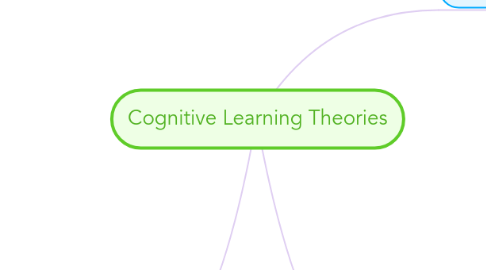
1. Two Theories, One Concept
1.1. Piaget’s theory (Ormrod, 2011)
1.1.1. focused on childhood development that was dependent upon different stages of life. Children between ages 2 and 6 are considered in the preoperational stage and possess the ability to think about objects beyond their view but cannot think logically yet. Whereas, children aged 6 to 12 are in the concrete operations stage and that entails the beginning of adult like logical thinking. The latter stage, is the age group that I will primarily be working with.
1.2. Vygotsky’s theory (Ormrod, 2011)
1.2.1. focused on childhood development dependent upon their interactions with the adult teacher. He stresses the importance of culture when it comes to the ways that a child learns and the ways in which their culture interprets the world. The age does not determine the child’s ability to complete a complex task as much as the level of competence the individual assisting them possess.
1.3. Both theories, however, agree that children build upon past knowledge to create and understand new knowledge about the world around them. (Ormrod, 2011)
1.3.1. Piaget used schemes in a process of either assimilation or accommodation. In assimilation, a child is able to identify and understood new things by putting it into a scheme they already understand, such as seeing a new snake and putting it in your “snake scheme.” Accommodation is when children have to either change an existing scheme to allow the new object in or create an entirely new scheme. An example of this would be a 13 year old that may have to revise her exist scheme of what “cool” fashion is as the times change.
1.3.2. Vygotsky’s cognitive tool is similar to Piaget’s schemes. Cognitive tools are concepts, symbols, strategies, or procedures that help people think about and understand new situations. Internalization is a process where learners gradually integrates activities into their own internal cognitive processes. Children are told directions over and over again by a teacher or adult, eventually the child will start to tell themselves the directions when faced with the same task.
2. Applying to My Work
2.1. Piaget’s theories
2.1.1. His stages are a rough guide to what the students should be able to accomplish. This does not mean one should take them too literally but there is a set curriculum for each grade just like he suggested that children learn certain aspects in each stage. For the age group of 6-11 year olds, they should be working on relating abstract and hypothetical ideas to concrete objects and observable events. An example would be a teacher placing an inflated balloon on one side of a scale and an uninflated balloon on the other. This shows the students that even though you cannot see the air that is filling the balloon, it still has mass. (Smith, 2007)
2.2. Vygotsky’s theory
2.2.1. can be applied to my elementary school teaching by involving great amounts of assistance and gradually lessening it. As a teacher, I could assign the students their first research paper knowing they will only be successful with a great deal of guidance or scaffolding. As they become more proficient in the tasks or assignments, I would gradually withdraw the support. This is something I do almost every day in my dance elective class. I will start off showing the students how to do a certain trick, then spot them all fully, then only half way spot them, then eventually just watch and give verbal feedback.
2.3. Miller and Almon
2.3.1. Miller and Almon, as well as Vygotsky, also saw the importance of play when it came to a developing child. Although the article focuses mostly on kindergarteners, studies have shown that allowing children to practice adult roles and adding aspects of playing to teaching, have improved a child’s overall learning experience. Also, focusing less on the many tests they are throwing at the children and focusing more on the content they should be learning. (Miller and Almon, 2009)
3. Present Day Learnings
3.1. Piaget
3.1.1. - Research has supported that learning does happen in a sequence form as Piaget suggested, however it does not support the ages. This means that cognitive development may not be universally stage-like. (Lopez Presentation) Realizing that everyone in a classroom is going to be at different cognitive stages and tailoring to that will help each child learn better. “Researchers are finding, however, that hands-on experiences with concrete objects and events are typically more effective when combined with instruction that helps students draw appropriate conclusions from what they observe.” (Ormrod, 2011)
3.2. Vygotsky
3.2.1. His theory does take into consideration the many ways in which culture influences cognitive development. Many theorists agree with his proposal that challenges spur children to acquire new skills and abilities. This ties to some research that supported Vygotsky’s idea of self-talk and inner speech in regards to learning new things. Teacher-student interaction is important, but teachers should not over step when providing assistance. They also should not undermine the importance of peer interactions when it comes to learning.
